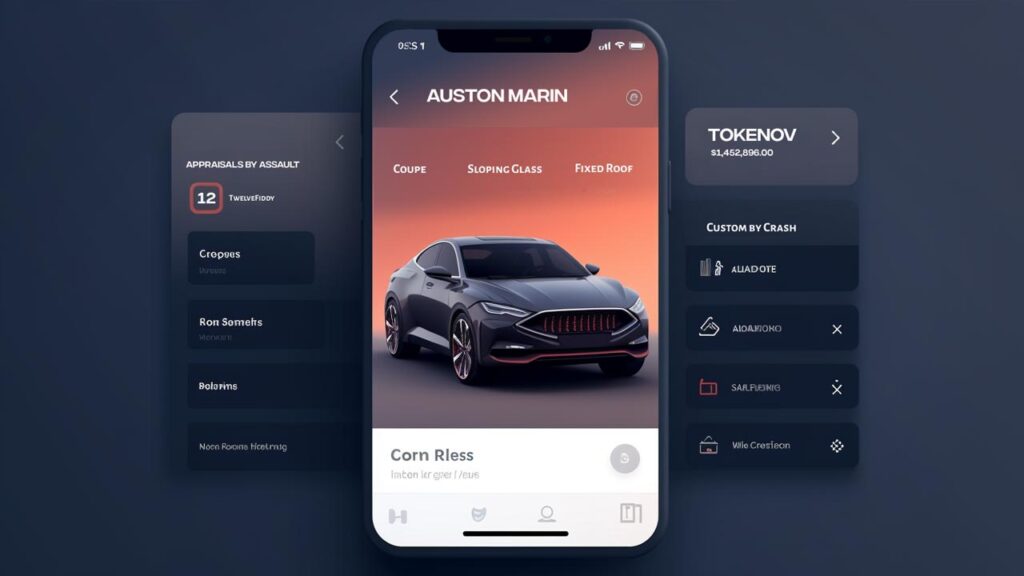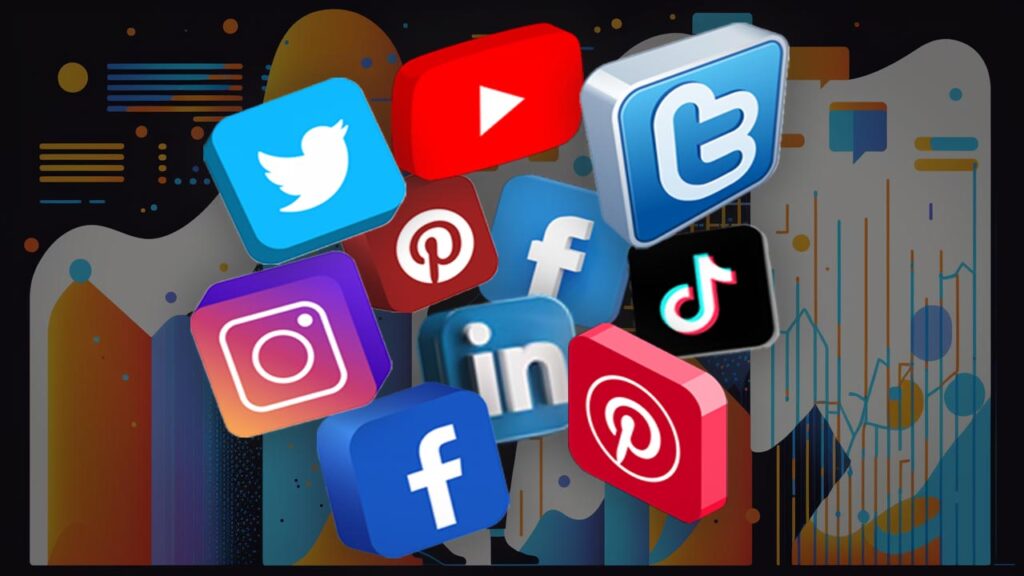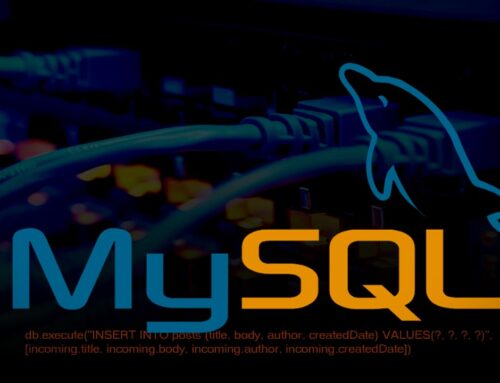Artificial intelligence (AI), once a distant concept, has now become a tangible reality shaping the trajectory of countless industries. Startups, known for their agile and adaptive nature, are no exception to this trend. A notable application of AI that’s gaining momentum in the startup ecosystem is the use of chatbots powered by GPT (Generative Pretrained Transformer) models. GPT models, developed by OpenAI, are transformative, large-scale unsupervised language models that utilize machine learning techniques for understanding and generating human language.

17 Ways to Leverage AI/Chat GPT for Startups
In my article, we will explore the myriad ways startups can leverage the power of AI, particularly Chat GPT, to optimize their operations, enhance customer engagement, and drive innovation. By integrating these AI chatbots into their business models, startups can significantly enhance their customer service, product development, content creation, and decision-making processes. We’ll delve into the top 17 specific use cases, explaining how each one can catalyze growth and foster a competitive edge in today’s fast-paced, technology-driven market.
Whether you are an entrepreneur looking to disrupt a niche market or a startup enthusiast curious about the convergence of AI and business, my article will offer you a comprehensive guide into the vast potential of AI, particularly GPT models, in the startup ecosystem.
Now let’s get going before it’s too late…
Table of Contents
- Customer Service and Support
- Content Creation
- Product Development
- Data Analysis
- Personalized Marketing
- Training and Onboarding
- Sales Process Automation
- Business Intelligence
- Social Media Management
- Hiring and Recruitment
- Business Automation
- Supply Chain Optimization
- Financial Analysis
- Website Interactions
- Quality Assurance
- Cybersecurity
- Product Recommendations
1. Customer Service and Support

The ever-evolving customer expectations for faster, 24/7 support and personalized experiences have been driving startups to rethink their approach to customer service. With the integration of AI chatbots, startups can level up their customer support game. GPT models, with their sophisticated language understanding and generation capabilities, can be instrumental in offering superior customer service experiences.
In this section, we will break down the different ways GPT can be harnessed to revolutionize customer service and support in startups.
Instant Responses
In the world of instant gratification, the ability to provide immediate responses to customer queries is not just a luxury; it’s a necessity. AI chatbots like GPT can help startups meet this growing customer demand by offering real-time responses. GPT’s ability to generate contextually accurate responses can significantly enhance customer engagement and satisfaction. With these instant responses, startups can ensure their customers feel valued and heard, thus bolstering their brand reputation.
24/7 Support
Providing continuous customer support is crucial in the global marketplace. However, maintaining a human customer service team round-the-clock is costly and resource-intensive. This is where GPT chatbots can offer a game-changing solution. These AI-powered bots can provide 24/7 support, responding to customer inquiries irrespective of time zones or holidays. This always-on service can dramatically improve customer experience, build customer trust, and enhance brand loyalty, especially for startups targeting global markets.
Multi-language Support
Expanding to international markets requires startups to cater to customers who speak different languages. GPT models are trained on vast and diverse language data, enabling them to understand and generate text in multiple languages. By integrating a GPT-powered chatbot, startups can provide multi-language support, thus breaking down language barriers and making their products or services more accessible to a global audience. This capability can significantly contribute to a startup’s market expansion and customer satisfaction strategies.
Issue Categorization and Routing
One of the challenges in customer service is ensuring that customer issues are directed to the right person or department for resolution. GPT-powered chatbots can analyze and categorize customer issues based on the conversation context and then route them to the appropriate agent or department. This not only streamlines the support process but also ensures faster resolution times and higher customer satisfaction levels. Moreover, it can also free up human agents from dealing with routine queries, allowing them to focus on more complex issues.
Personalized Interactions
Personalization is a key differentiator in customer service. GPT chatbots, with their ability to generate context-specific responses, can offer a level of personalization that goes beyond traditional automated systems. These chatbots can tailor responses based on the customer’s past interactions, preferences, and behaviors, delivering a more engaging and personalized customer experience. This not only enhances customer satisfaction but also fosters long-term customer relationships, critical for startups aiming for sustainable growth.
Customer Service and Support FAQ's
Customer Service and Support Sources
- “AI Chatbots: Revolutionizing Customer Service.” Forbes.
- “How AI Can Improve Customer Service 24/7.” Harvard Business Review.
- “AI and Language: A Multilingual Revolution.” OpenAI.
- “AI in Customer Service: An Operational Perspective.” MIT Sloan Review.
- “Personalization in Customer Service: The Role of AI and Chatbots.” Deloitte.
2. Content Creation

Content creation is a critical aspect of any startup’s marketing strategy. Engaging, informative content not only helps to attract and retain customers, but also plays a pivotal role in shaping a startup’s brand image. In this domain, GPT models open a world of possibilities, serving as a reliable and efficient partner in generating high-quality content.
In this section, we will discuss how GPT can be used in the various stages of the content creation process.
Content Generation
GPT models can be a great asset when it comes to generating content. They can produce high-quality articles, blog posts, product descriptions, and other forms of written content. Leveraging AI for content generation not only speeds up the process, but it also frees up human resources to focus on more strategic tasks. By feeding the AI with key points or an outline, startups can get a well-structured, comprehensive piece of content in no time. This ability can be a game-changer for startups, where resources and time are often limited.
Content Curation
Keeping up with the latest industry trends and developments is essential for startups to stay competitive. Here, GPT-powered bots can play a significant role by curating relevant content from a vast array of online sources. By programming the AI with the right parameters, startups can get a personalized list of articles, news, and trends in their field. This saves time spent on manual research and ensures that the startup stays at the forefront of industry developments.
Content Optimization
Creating content is just part of the equation; optimizing it for search engines and aligning it with the brand’s voice is equally important. GPT models, with their language understanding capabilities, can assist in this area as well. They can provide recommendations for keyword inclusion, meta descriptions, and even suggest adjustments to match the brand’s voice and tone. This can help startups ensure their content is SEO-friendly and resonates with their target audience.
Social Media Content
Social media is a powerful platform for startups to connect with their audience and build brand awareness. However, consistently creating engaging content for social media can be challenging. With GPT, startups can generate a variety of content for their social media channels, from catchy tweets to insightful LinkedIn posts. This can help startups maintain an active social media presence and interact effectively with their audience.
Email Campaigns
Email campaigns are a widely used marketing tool, and personalization is key to their success. GPT can be used to generate personalized emails for marketing campaigns based on the customer’s past interactions, preferences, and behavior. This can increase the open and click-through rates, enhancing the effectiveness of the email campaign. Moreover, the AI can automate the process of drafting follow-up emails, saving time and increasing productivity.
Content Creation FAQ's
Content Creation Sources
- “AI for Content Creation: The Next Revolution?” Forbes.
- “How AI Is Transforming Content Curation.” TechCrunch.
- “How to Use AI for SEO.” Search Engine Journal.
- “AI in Social Media: How Marketers Can Fully Embrace the Use of Technology.” Forbes.
- “Email Marketing and AI: How Artificial Intelligence Will Transform Your Email Strategy.” Campaign Monitor.
3. Product Development

Product development is a central activity in any startup. It involves coming up with new product ideas, designing prototypes, conducting market research, and finally, launching the product. GPT models can be effectively used to support various stages of this process.
In this section, we will explore how GPT can facilitate and enrich the product development process.
Idea Generation
Innovation is the lifeline of startups, and generating new, viable ideas for products or features is a constant necessity. GPT models, with their capacity to analyze vast amounts of data and generate contextually relevant text, can be used for idea generation. They can sift through industry trends, emerging technologies, customer preferences, and more, to generate a list of potential ideas. This can help startups stay ahead of the curve and continuously innovate.
Market Research
Understanding the market landscape is crucial in product development. AI chatbots can be programmed to gather market data, analyze it, and present actionable insights. They can track competitors, identify market trends, understand customer needs, and much more. By automating market research, startups can save time, reduce costs, and get accurate, up-to-date market insights.
Product Descriptions and Documentation
Writing product descriptions and creating documentation is a time-consuming task. GPT can simplify this process by automatically generating descriptive and persuasive product descriptions, user manuals, FAQ sections, and more. By feeding the AI with the necessary product information and specifications, startups can get well-crafted content that highlights the product’s features and benefits, saving time and ensuring consistency.
Customer Feedback Analysis
Analyzing customer feedback is essential for identifying product improvements. GPT models can process and analyze large volumes of customer feedback from various sources, identify common issues, and provide insights. These insights can help startups enhance their products, improve customer satisfaction, and ultimately, boost their market success.
Predictive Modeling
Predicting market response to a new product is critical in shaping the product development strategy. GPT, with its language understanding and generation capabilities, can support predictive modeling by analyzing historical data and identifying patterns. This can help startups anticipate customer response to their products, allowing them to adjust their strategies accordingly and maximize their success.
Product Development FAQ's
Product Development Sources
- “How AI Can Enable the Next Wave of Idea Generation.” VentureBeat.
- “How AI Is Transforming Market Research.” Forbes.
- “How AI Is Revolutionizing Product Description Writing.” Business.com.
- “Customer Feedback Analysis: How AI Makes It Actionable.” TechNative.
- “Predictive Modeling and AI in Product Development.” Artificial.
4. Data Analysis

In the modern business environment, data is often referred to as the new oil. Startups that can effectively gather, analyze, and act on data have a significant competitive advantage. GPT models, with their capacity for natural language processing and machine learning, can be instrumental in enabling startups to maximize the value of their data.
In this section, we will examine how GPT can be utilized to support various aspects of data analysis.
Data Collection
Data collection is the first step in any data analysis process. GPT models can automate the data collection process by gathering and organizing data from various sources, such as databases, web pages, social media, and other digital platforms. By automating this process, startups can save time, reduce errors, and ensure they have a comprehensive set of data for analysis.
Data Processing
Once data is collected, it needs to be processed and cleaned to ensure its quality and reliability. GPT models can be used to identify and correct errors, remove duplicates, fill missing values, and carry out other data cleaning tasks. This ensures that the data is accurate, consistent, and ready for further analysis.
Data Visualization
Visual representations of data can make complex information more understandable and accessible. GPT, with its understanding of context and relationships, can assist in creating meaningful data visualizations such as charts, graphs, and dashboards. By providing visual summaries of the data, GPT can help startups better understand their data and make more informed decisions.
Predictive Analysis
Predictive analysis involves using historical data to forecast future trends or outcomes. GPT models can support this process by identifying patterns in the data and generating predictions based on these patterns. These insights can help startups anticipate future trends, plan their strategies, and make data-driven decisions.
Reporting and Insights
Generating reports and gleaning insights from data is a critical aspect of data analysis. GPT can automate this process by generating comprehensive reports that summarize the data analysis results. Furthermore, it can provide actionable insights based on the data, highlighting key findings and suggesting potential actions. This can help startups understand their performance, identify opportunities for improvement, and strategize their next steps.
Data Analysis FAQ's
Data Analysis Sources
- “Data Collection in AI: Why and How to Begin.” Medium.
- “The Importance of Data Cleaning in Machine Learning.” Towards Data Science.
- “Data Visualization and AI: Seeing is Believing.” Information Age.
- “Predictive Analytics: What it is and why it matters.” SAS.
- “AI in Business Reporting and Data Storytelling.” DataRobot.
5. Personalized Marketing

In today’s digital world, consumers expect a high level of personalization in their interactions with businesses. Personalized marketing, which involves delivering individualized content to customers based on their preferences, behaviors, and past interactions, is therefore a crucial strategy for startups. In this realm, GPT models can offer significant benefits.
In this section, we will delve into how GPT can be used to enhance personalized marketing efforts.
Customer Segmentation
Customer segmentation is a crucial part of personalized marketing. It involves grouping customers based on various characteristics, such as demographics, interests, and behavior. GPT models can assist in this process by analyzing customer data and identifying meaningful segments. This enables startups to tailor their marketing strategies to each segment, resulting in more personalized and effective campaigns.
Personalized Content
Delivering personalized content is a key element of personalized marketing. GPT models, with their ability to generate contextually relevant text, can be used to create personalized content for customers. This might include blog posts, articles, social media posts, and more, tailored to each customer’s unique preferences and needs. This level of personalization can improve customer engagement and satisfaction, leading to higher conversion rates.
Personalized Recommendations
One of the powerful ways GPT can be used in personalized marketing is through providing personalized recommendations. By analyzing customer data, including past purchases and browsing history, GPT models can generate personalized product or service recommendations. These recommendations can enhance the shopping experience, increase sales, and boost customer loyalty.
Behavioral Tracking and Analysis
Understanding customer behavior is vital for personalized marketing. GPT models can track and analyze a wide range of customer behaviors, from their interactions with a website or app to their responses to marketing campaigns. This analysis can provide valuable insights, enabling startups to understand their customers better and personalize their marketing efforts accordingly.
Email Personalization
Email marketing remains a powerful tool for businesses, and personalization can significantly enhance its effectiveness. GPT can be used to create personalized emails that resonate with each recipient. This might include personalized subject lines, content tailored to the recipient’s interests, and personalized product recommendations. This level of personalization can increase email open rates, click-through rates, and conversions.
Personalized Marketing FAQ's
Personalized Marketing Sources
- “Why Customer Segmentation Is Important.” Forbes. Available at:
- “How AI Can Power Personalization.” Harvard Business Review.
- “How AI Is Changing the Future of Personalized Recommendations.” Forbes.
- “The Importance of Behavioral Tracking in Digital Marketing.” Medium.
- “Email Personalization with AI.” Mailchimp.
6. Training and Onboarding

Startups often face the challenge of training and onboarding new employees efficiently. With their ability to understand and generate human-like text, GPT models can be an invaluable tool in this process, making it more interactive, engaging, and efficient.
In this section, we will delve into how GPT can be utilized to enhance training and onboarding efforts.
Interactive Training
Interactive training can significantly enhance the learning experience, making it more engaging and memorable. GPT models can be used to create interactive training modules, using quizzes, simulations, and other interactive elements. This can help employees better understand and retain the training content, resulting in more effective learning outcomes.
On-Demand Learning
In today’s fast-paced business environment, providing on-demand learning resources is critical. GPT models can support this by generating training content that employees can access anytime, anywhere. This can include text-based content, audio, video, interactive modules, and more. By enabling on-demand learning, startups can provide flexible training options that cater to each employee’s schedule and learning preferences.
Personalized Learning Paths
Every employee has unique learning needs and preferences. GPT can assist in creating personalized learning paths for each employee. This might involve analyzing each employee’s skills, knowledge, and learning style, and generating a tailored learning plan. Personalized learning paths can enhance the effectiveness of training by catering to each individual’s needs<.
Role-Play Scenarios
Role-play scenarios can be a highly effective training tool, helping employees practice and develop their skills in a safe environment. GPT models can generate role-play scenarios based on various situations that an employee might encounter in their role. This can help employees develop practical skills, improve their problem-solving abilities, and prepare for real-world situations.
Continuous Learning and Improvement
In the modern business world, continuous learning and improvement are crucial. GPT can support this by providing ongoing training and feedback. It can generate new training content based on changing business needs, industry trends, and individual learning progress. Additionally, it can provide feedback on employees’ performance in training exercises, helping them identify areas for improvement and track their progress.
Training and Onboarding FAQ's
Training and Onboarding Sources
- “The Power of Interactive Training.” eLearning Industry.
- “On-Demand Learning: What It Is and Why It’s the Future of Employee Training.” LearnUpon.
- “The Benefits of Personalized Learning Through Technology.” EdTech Magazine.
- “The Role of AI in Learning and Development.” Forbes.
- “Continuous Learning: How Organizations Can Cultivate a Learning Culture.” Medium.
7. Sales Process Automation

In a startup environment, sales are often the lifeline for growth and success. However, the sales process can be complex and time-consuming, involving numerous tasks such as prospecting, lead qualification, follow-ups, and reporting. GPT models can automate many of these tasks, making the sales process more efficient and effective.
In this section, we will explore how GPT can be leveraged to support sales process automation.
Lead Scoring
Lead scoring is a method of ranking prospects based on their likelihood to convert. By analyzing various factors such as a prospect’s behavior, interaction with the brand, and other demographic information, GPT models can automatically assign scores to leads. This helps sales teams prioritize their efforts on high-potential leads, thus increasing conversion rates and optimizing the sales process.
Automated Follow-Ups
Follow-ups are a crucial part of the sales process. However, manually managing follow-up emails can be time-consuming and prone to errors. GPT can automate this process by generating and sending personalized follow-up emails based on predefined criteria. This not only enhances efficiency but also ensures timely and consistent communication with prospects, thereby increasing the chances of conversion.
Sales Forecasting
Sales forecasting involves predicting future sales trends based on historical data. GPT models can assist in this process by analyzing past sales data, identifying patterns, and generating forecasts. These forecasts can help startups anticipate future sales, plan their strategies, and make data-driven decisions.
Customer Relationship Management (CRM)
CRM systems are widely used to manage a company’s interactions with its customers and prospects. GPT can be integrated with CRM systems to automate various tasks such as data entry, lead qualification, and follow-up scheduling. This not only makes the sales process more efficient but also allows sales teams to focus more on building relationships and closing deals.
Sales Reporting
Sales reporting is essential for tracking a startup’s sales performance and gaining insights into its sales activities. GPT can automate the generation of comprehensive sales reports, presenting data in an understandable and actionable manner. These reports can provide valuable insights into sales trends, performance against targets, and areas for improvement.
Sales Process Automation FAQ's
Sales Process Automation Sources
- “How AI Is Transforming Lead Scoring in CRM.” Forbes.
- “Automated Follow-Up Emails: How to Write and Send Them.” SuperOffice.
- “AI for Sales Forecasting – How it Works and Where to Apply it.” Emerj.
- “How AI Is Changing CRM.” Forbes.
- “Sales Reporting: The Complete Guide.” Smartsheet.
8. Business Intelligence

Startups can greatly benefit from the insights gleaned through business intelligence (BI). BI involves analyzing business data to gain insights into performance, trends, and areas for improvement. GPT models can be a valuable tool in the realm of business intelligence, capable of generating insights and predictions from complex data sets.
In this section, we will discuss how GPT can be employed to enhance BI efforts.
Data Mining
Data mining involves analyzing large datasets to identify patterns, trends, and relationships. GPT models can assist in data mining by processing and analyzing vast amounts of data quickly and accurately. This can help startups extract valuable insights from their business data, supporting decision-making and strategy formulation.
Predictive Analytics
Predictive analytics involves using historical data to forecast future trends. GPT models can analyze past business data, identify patterns, and generate predictions about future business outcomes. These predictions can help startups anticipate future trends, plan their strategies, and make data-driven decisions.
Reporting and Visualization
Reporting and visualization involve presenting business data in a format that is easy to understand and actionable. GPT can automate the generation of reports and visualizations, presenting complex data in a simplified manner. This can help startups gain a clearer understanding of their performance, trends, and areas for improvement.
Market Research and Competitive Analysis
Market research and competitive analysis are crucial for understanding the market landscape and identifying opportunities and threats. GPT models can analyze market data and conduct competitive analysis, providing valuable insights to startups. This can support strategic planning, product development, marketing, and other business functions.
Performance Metrics and KPIs
Performance metrics and Key Performance Indicators (KPIs) are essential for measuring a startup’s performance and progress towards its goals. GPT can track and analyze performance metrics and KPIs, providing ongoing insights into the startup’s performance. This can help startups identify areas for improvement, track their progress towards their goals, and adjust their strategies as needed.
Business Intelligence FAQ's
Business Intelligence Sources
- “How AI Is Making Data Mining More Efficient.” Forbes.
- “Predictive Analytics: What it is and why it matters.” SAS.
- “How AI can improve your data visualization.” Tableau.
- “How AI Can Enhance Your Competitive Analysis.” Harvard Business Review.
- “The Role of AI in Performance Management.” ClearCompany.
9. Social Media Management

Social media is a crucial tool for startups to reach their target audience, build their brand, and engage with customers. However, managing social media channels can be time-consuming and complex. GPT models can automate many aspects of social media management, making it more efficient and effective.
In this section, we will discuss how GPT can be leveraged for social media management.
Content Generation
Creating engaging content is crucial for a startup’s social media strategy. GPT models can generate social media content based on predefined criteria, saving time and enhancing consistency across posts. This includes text posts, captions for images or videos, and responses to comments or messages. By automating content generation, startups can ensure a steady stream of high-quality content on their social media channels.
Customer Engagement
Customer engagement on social media involves responding to comments and messages, addressing concerns, and fostering conversations. GPT can automate responses based on the content of the customer’s message, enhancing the speed and consistency of customer engagement. This can improve customer satisfaction, loyalty, and brand perception.
Social Listening and Sentiment Analysis
Social listening involves monitoring social media channels for mentions of your brand, competitors, products, or relevant keywords. Sentiment analysis involves determining the sentiment (positive, negative, neutral) of these mentions. GPT models can conduct social listening and sentiment analysis, providing valuable insights into the audience’s perceptions, needs, and preferences. This can help startups understand their audience better and adjust their strategies accordingly.
Trend Discovery
Identifying and capitalizing on emerging trends can give startups a competitive edge. GPT can analyze social media data to identify trends in conversation topics, hashtags, keywords, and more. By staying ahead of these trends, startups can make timely and relevant posts, participate in trending conversations, and enhance their visibility and engagement.
Ad Creation and Optimization
Social media advertising can be a powerful tool for startups to reach their target audience. GPT can assist in creating ad content that resonates with the target audience. It can also optimize ads by analyzing ad performance data and making adjustments to maximize their impact and return on investment (ROI).
Social Media Management FAQ's
Social Media Management Sources
- “AI for Content Marketing: How to Automate Your Content Strategy.” Contentstack.
- “How AI Can Improve Customer Engagement.” Salesforce.
- “How to Use AI for Social Media Listening.” Brandwatch.
- “How AI Can Help Brands Identify and Participate in the Right Cultural Moments.” Adweek.
- “How AI Is Changing Advertising.” AdAge.
10. Hiring and Recruitment

Hiring and recruitment are vital for startups looking to build a talented and dedicated team. However, the process can often be lengthy, labor-intensive, and prone to bias. AI and GPT models can streamline and enhance the hiring and recruitment process, making it more efficient, unbiased, and effective.
In this section, we will explore how GPT can be leveraged to improve hiring and recruitment.
Resume Screening
Screening resumes can be a time-consuming task, especially when a startup receives a high volume of applications. GPT models can assist in this process by scanning resumes for key skills, qualifications, and experiences that match the job description. This can help startups quickly identify the most suitable candidates for a position, reducing time-to-hire and enhancing the efficiency of the recruitment process.
Candidate Outreach
Engaging with potential candidates effectively is critical in the recruitment process. GPT models can help automate candidate outreach emails or messages. By personalizing the communication based on the candidate’s profile and the job requirements, GPT can enhance the effectiveness of outreach efforts. This can improve response rates and build a positive impression of the startup among potential candidates.
Interview Scheduling
Scheduling interviews can be a complex task, involving coordination between the hiring team and the candidates. GPT models can automate this process by interacting with candidates to find a suitable time for the interview, sending calendar invites, and providing reminders. This makes the scheduling process more efficient and convenient for both the hiring team and the candidates.
Interview Assistance
During interviews, GPT models can assist in evaluating candidates’ responses. By analyzing the content, structure, and sentiment of responses, GPT can provide an unbiased assessment of the candidate’s suitability for the role. This can help reduce bias in the hiring process and ensure a fair evaluation of all candidates.
Onboarding
Onboarding is a critical phase where new hires learn about the startup’s culture, processes, and expectations. GPT can support the onboarding process by providing new hires with necessary information and assistance. This includes generating personalized onboarding plans, answering FAQs, and directing new hires to relevant resources. This can ensure a smooth onboarding experience and help new hires quickly become productive members of the team.
Hiring and Recruitment FAQ's
Social Media Management Sources
- “How AI Is Changing Your Job Hunt.” Forbes.
- “AI for Recruiting: A Definitive Guide for HR Professionals.” Ideal.
- “5 Ways AI Can Improve Your Recruitment Process.” HR Technologist.
- “The Future Of Hiring: How AI Can Eliminate Bias In Your Recruitment Process.” Forbes.
- “The Benefits of AI in HR Onboarding.” HR Daily Advisor.
11. Business Automation

In the fast-paced world of startups, efficiency and productivity are key to success. One of the ways startups can increase their efficiency is through business automation. GPT models can automate various business tasks and processes, freeing up time and resources for more strategic initiatives.
In this section, we will discuss how GPT can be leveraged for business automation.
Administrative Tasks
Administrative tasks, such as data entry, file organization, and document generation, can consume a significant amount of time and resources. GPT models can automate these tasks, helping startups streamline their operations and focus on more strategic initiatives. For example, GPT can generate standard documents or reports, sort and categorize files, and update databases, saving time and reducing the risk of human error.
Email Management
Email is a crucial communication tool for startups, but managing a high volume of emails can be challenging. GPT models can help automate email management, enhancing productivity and communication efficiency. This includes sorting emails into categories, generating automated responses, and flagging important emails for immediate attention. By automating email management, startups can ensure timely and effective communication, while freeing up time for more important tasks.
Meeting Scheduling
Scheduling meetings involves coordinating with multiple participants to find a suitable time and setting up calendar invites. GPT models can automate this process, making it more efficient and convenient for all participants. GPT can interact with participants to identify a suitable time, generate calendar invites, and provide reminders, making meeting scheduling seamless and efficient.
Project Management
Project management involves planning, coordinating, and overseeing tasks to ensure projects are completed on time and within budget. GPT models can assist in project management by automating various tasks. This includes generating project plans, tracking progress, flagging potential issues, and providing status updates. By automating project management, startups can enhance project efficiency and success.
Invoicing and Payments
Managing invoices and payments is crucial for a startup’s financial health, but it can be time-consuming and prone to errors. GPT models can automate the invoicing and payment process, making it easier for startups to manage their finances. GPT can generate and send invoices, track payments, send payment reminders, and update financial records. This can enhance the efficiency of financial management, improve cash flow, and reduce the risk of errors.
Business Automation FAQ's
Business Automation Sources
- “How AI Can Streamline Your Business Operations.” Forbes.
- “How AI Can Help You Better Manage Your Work Email.” Harvard Business Review.
- “The Future of Meeting Scheduling.” Entrepreneur.
- “How AI is Revolutionizing Project Management.” PMI.
- “How AI is Changing the Landscape of Digital Marketing.” Forbes.
12. Supply Chain Optimization

In today’s competitive business environment, efficient and resilient supply chain management is a strategic necessity. Startups, especially those in the manufacturing, retail, and logistics sectors, can leverage AI and GPT models to optimize their supply chains, reducing costs, improving efficiency, and enhancing customer service.
In this section, we will discuss how GPT can be utilized for supply chain optimization.
Demand Forecasting
Predicting future demand is crucial for startups to plan their production, inventory, and logistics. GPT models can assist in demand forecasting by analyzing historical sales data, market trends, and other relevant factors. This can help startups predict future demand with a higher degree of accuracy, make informed decisions, and avoid overstocking or stockouts.
Inventory Management
Effective inventory management can reduce costs, improve service levels, and enhance cash flow. GPT models can optimize inventory management by predicting optimal inventory levels, suggesting reorder points, and automating reordering processes. By leveraging GPT for inventory management, startups can minimize their holding and ordering costs, reduce stockouts, and ensure they can meet customer demand promptly.
Route Optimization
For startups involved in delivery or logistics, route optimization can improve efficiency and customer service. GPT models can optimize delivery routes by analyzing factors such as delivery locations, traffic conditions, and delivery time windows. This can reduce delivery times, improve customer satisfaction, and lower transportation costs.
Supplier Evaluation
Working with reliable and high-quality suppliers is crucial for a startup’s success. GPT models can assist in evaluating suppliers by analyzing factors such as price, quality, reliability, and service levels. This can ensure startups work with the best suppliers, reducing the risk of supply disruptions and enhancing the quality of their products or services.
Risk Management
Supply chains are susceptible to various risks, including supply disruptions, demand fluctuations, and price volatility. GPT models can support risk management in supply chain operations by identifying potential risks and suggesting mitigation strategies. This can enhance the resilience of the startup’s supply chain, ensuring they can quickly recover from disruptions and continue to serve their customers.
Supply Chain Optimization FAQ's
Supply Chain Optimization Sources
- “How AI And Machine Learning Are Transforming The Supply Chain Management.” Forbes.
- “How AI Can Improve Inventory Management.” Business 2 Community.
- “How AI in Logistics Helps Deliver a Better Customer Experience.” LogiNext.
- “AI in Procurement: How AI Can Improve Your Supplier Management.” SpendEdge.
- “How AI Can Drive Risk Management in Supply Chains.” Supply Chain Digital.
13. Financial Analysis

Financial analysis is crucial for the success of startups. It helps them understand their financial performance, make informed decisions, and attract investors. With advancements in AI and the introduction of models like GPT, financial analysis has become more accurate, efficient, and insightful.
In this section, we will discuss how GPT can be used in financial analysis.
Financial Forecasting
Financial forecasting involves predicting a startup’s future financial performance based on historical data and market trends. GPT models can assist in financial forecasting by analyzing historical financial data and identifying patterns and trends. This can help startups forecast their revenues, expenses, and profitability with a higher degree of accuracy, enabling them to plan and strategize effectively.
Investment Analysis
Investment analysis is crucial for startups to maximize their returns and ensure their financial sustainability. GPT models can analyze various investment options, taking into account factors such as returns, risks, and liquidity. This can provide startups with accurate and comprehensive investment analysis, helping them make informed investment decisions.
Risk Assessment
Financial risk assessment involves identifying and evaluating potential financial risks that a startup might face. GPT models can aid in financial risk assessment by analyzing financial data, market conditions, and other relevant factors. This can help startups identify potential risks, evaluate their impact, and develop effective mitigation strategies.
Financial Reporting
Financial reporting is essential for startups to understand their financial performance, make informed decisions, and communicate with investors. GPT models can automate financial reporting, enhancing accuracy and efficiency. They can generate financial reports, identify and highlight key trends, and even provide insights and recommendations. This can save time, reduce errors, and provide startups with valuable financial insights.
Fraud Detection
Financial fraud can have severe consequences for startups, including financial losses and damage to their reputation. GPT models can support fraud detection efforts by analyzing financial transactions and identifying suspicious activities. They can detect anomalies, identify patterns associated with fraud, and alert the startup, enhancing its financial security.
Financial Analysis FAQ's
Financial Analysis Sources
- “How AI Can Improve Financial Forecasting.” Forbes.
- “Artificial Intelligence and Investment Decisions: The Future is Here.” Investment News.
- “How AI Can Improve Risk Management.” Forbes.
- “How AI is Transforming Financial Reporting.” Wall Street Journal.
- “AI and Machine Learning in Fraud Detection: A Primer.” Finextra.
14. Website Interactions

In today’s digital age, a startup’s website is often the first point of contact for potential customers. Improving the user experience on the website can enhance customer satisfaction, increase engagement, and drive conversions. Startups can leverage AI and GPT models to enhance website interactions and provide a personalized and seamless user experience.
In this section, we will discuss how GPT can be utilized to improve website interactions.
User Experience Personalization
User experience personalization involves tailoring the website experience based on the individual user’s behavior, preferences, and needs. GPT models can personalize the user experience by analyzing user data and making real-time adjustments to the website. This could include suggesting relevant products or content, providing personalized offers, or adjusting the website layout based on the user’s behavior. By personalizing the user experience, startups can enhance engagement, increase customer satisfaction, and drive conversions.
Chatbots for Instant Support
Chatbots are an effective tool for providing instant support to website visitors. GPT models can power these chatbots, enabling them to understand and respond to a wide range of queries. These chatbots can provide product information, answer frequently asked questions, help with navigation, and even assist with transactions. By providing instant and accurate support, startups can enhance customer service, increase engagement, and drive sales.
Interactive Content
Interactive content, such as quizzes, calculators, or interactive infographics, can engage users and enhance their website experience. GPT models can generate such interactive content, making it more engaging and relevant for users. For example, GPT could generate a personalized quiz based on the user’s preferences or a calculator that provides customized recommendations. This can increase user engagement, enhance the user experience, and drive conversions.
Web Analytics
Understanding user behavior and website performance is crucial for improving the website and driving conversions. GPT models can analyze website data, such as traffic sources, user behavior, and conversion rates, providing valuable insights. These insights can help startups identify opportunities for improvement, optimize their website, and enhance their marketing strategies.
Accessibility Enhancement
Making the website accessible to all users, including those with disabilities, is crucial for inclusivity and can also enhance the startup’s reach and reputation. GPT models can enhance website accessibility by providing alternative text for images, transcribing audio content, or suggesting improvements in website design to make it more accessible. By enhancing website accessibility, startups can ensure it is user-friendly for all visitors, enhancing their reach and reputation.
Website Interactions FAQ's
Website Interactions Sources
- “How AI Can Drive Website Personalization.” Econsultancy.
- “Chatbots Were the Next Big Thing: What Happened?” Harvard Business Review.
- “Interactive Content: The Good, The Bad, and The Wacky.” Content Marketing Institute.
- “Using AI to Understand and Optimize Web Performance.” Harvard Business Review.
- “Making the Web More Accessible With AI.” Google AI Blog.
15. Quality Assurance

Quality assurance (QA) is a critical process for any startup. Ensuring that products, services, or systems meet specified requirements and are reliable and efficient helps enhance customer satisfaction and boosts business growth. With the advent of AI and the deployment of models like GPT, the QA process has become significantly more streamlined and efficient.
In this section, we will discuss how GPT can be used in quality assurance.
Automated Testing
Automated testing is a crucial aspect of QA that involves using software tools to run tests that repeatedly execute a predefined set of steps and compare the results with expected outcomes. GPT models can assist in this process by creating automated test scripts or by enhancing the functionality of existing automated testing tools. The use of AI in automated testing can reduce the time and resources needed, increase the coverage of tests, and improve the accuracy of test results.
Bug Detection and Troubleshooting
Detecting and troubleshooting bugs in software or systems is an essential part of QA. GPT models can assist in this process by analyzing the software code, identifying potential errors or bugs, and suggesting fixes. Furthermore, they can process and analyze bug reports, identify patterns, and recommend potential solutions. This can improve the efficiency and effectiveness of the bug detection and troubleshooting process.
User Experience Testing
User experience testing involves assessing how users interact with a product or service and whether it meets their needs and expectations. GPT models can assist in this process by simulating user interactions and analyzing user feedback. This can help startups understand how users perceive their product or service, identify potential improvements, and ensure it meets user needs and expectations.
Process Optimization
Process optimization involves enhancing the efficiency and effectiveness of QA processes. GPT models can assist in process optimization by analyzing QA data, identifying bottlenecks or inefficiencies, and suggesting improvements. This can help startups reduce the time and resources needed for QA, improve the quality of their products or services, and enhance customer satisfaction.
Documentation Generation and Review
Documentation is a crucial part of QA, providing a record of QA processes and results. GPT models can automate the generation and review of QA documentation. They can generate reports, create and update QA documentation, and review documents for completeness and accuracy. This can enhance the accuracy and efficiency of QA documentation, reducing the time and resources needed.
Quality Assurance FAQ's
Quality Assurance Sources
- “AI in Software Testing: Future and Benefits.” Mindtree.
- “AI for Code: Is AI Going to Write Code?” Towards Data Science.
- “How AI is Revolutionizing User Experience.” Forbes.
- “The Future of Quality Assurance in the AI Era.” PwC.
- “How AI Can Improve Documentation.” Forbes.
16. Cybersecurity

Cybersecurity is one of the critical concerns for startups, especially in this digital age. With cyber threats on the rise, it’s vital for startups to have robust cybersecurity measures in place. The emergence of AI technologies like GPT has significantly advanced cybersecurity solutions, making them more effective and efficient.
In this section, we will discuss how GPT can be used in cybersecurity.
Threat Detection
Threat detection is a critical aspect of cybersecurity, involving the identification of potential cybersecurity threats. GPT models can assist in this process by analyzing network traffic, system logs, and other relevant data to identify potential threats. They can detect anomalies, identify patterns associated with cyber threats, and alert the startup, enhancing its cybersecurity.
Incident Response
Incident response involves responding to cybersecurity incidents to minimize their impact and recover as quickly as possible. GPT models can assist in incident response by analyzing the incident, recommending response strategies, and automating certain response actions. This can enhance the speed and effectiveness of the response, minimizing the impact of the incident.
Risk Assessment
Risk assessment involves identifying and evaluating potential cybersecurity risks. GPT models can assist in risk assessment by analyzing system configurations, network architectures, and other relevant data to identify potential vulnerabilities and risks. They can evaluate the potential impact and likelihood of these risks, helping startups prioritize their cybersecurity efforts.
Secure Code Review
Secure code review involves reviewing the software code to identify potential security vulnerabilities. GPT models can assist in secure code review by analyzing the code and identifying potential vulnerabilities or security issues. This can help ensure that the software code is secure and free from vulnerabilities, enhancing the cybersecurity of the startup.
Cybersecurity Training
Cybersecurity training involves training employees on cybersecurity best practices and how to respond to cybersecurity incidents. GPT models can play a key role in cybersecurity training by providing interactive and effective training. They can simulate cyber threats, provide real-time feedback, and adapt the training based on the learner’s progress. This can enhance the effectiveness of the training and improve the startup’s cybersecurity.
Cybersecurity FAQ's
Cybersecurity Sources
- “How AI Can Boost Your Cybersecurity.” Forbes.
- “How AI is Revolutionizing Incident Response.” Security Boulevard.
- “Risk-Based Approach to Cybersecurity.” Dark Reading.
- “AI for Code: Is AI Going to Write Code?” Towards Data Science.
- “The Future of Cybersecurity Training.” CSO Online.
17. Product Recommendations

Product recommendations play a pivotal role in today’s digital marketplace. They not only help users find the products they want but also boost the conversion rates and average order value for businesses. With AI and models like GPT, the generation of personalized product recommendations has become more accurate and efficient.
In this section, we will explore how GPT can be employed in product recommendations.
Personalized Recommendations
Personalized recommendations involve tailoring product suggestions to individual users based on their behavior, preferences, and needs. GPT models can assist in creating personalized recommendations by analyzing users’ browsing history, past purchases, and other relevant data. This allows the system to understand the user’s preferences and provide product recommendations that are more likely to meet their needs.
Improving User Engagement
User engagement refers to the degree to which users interact with a platform. Providing relevant and appealing product recommendations can enhance user engagement, encouraging users to spend more time on the platform and interact more with its offerings. GPT models can help improve user engagement by analyzing user behavior and generating product recommendations that are more likely to interest and engage the user.
Optimizing Marketing Efforts
Marketing efforts involve promoting products to potential customers. GPT models can assist in optimizing marketing efforts by tailoring product recommendations based on the user’s past browsing and purchasing history. This allows the startup to target its marketing efforts more effectively, improving conversion rates and return on marketing investment.
Customer Retention
Customer retention refers to the ability of a startup to retain its customers over time. Personalized and accurate product recommendations can improve customer retention by enhancing customer satisfaction and loyalty. GPT models can contribute to customer retention by continuously learning from user behavior and preferences and adapting product recommendations accordingly.
Enhancing Shopping Experience
The shopping experience refers to the user’s overall experience when shopping on a platform. By simplifying the product search process and providing personalized recommendations, GPT models can enhance the shopping experience. They can help users find the products they want more quickly and easily, making the shopping process more enjoyable and efficient.
Product Recommendations FAQ's
Product Recommendations Sources
- “Why Personalization Is Key for E-commerce.” Forbes.
- “The Future of Customer Engagement.” Salesforce.
- “How AI is Changing the Future of Marketing.” Forbes.
- “Customer Retention Is King: The Future of Retention Marketing.” Forbes.
- “The Future of E-commerce: The Road Ahead for E-commerce Brands.” Shopify.
Final Thoughts
The convergence of AI, particularly AI chatbots like GPT, and business can fuel unprecedented growth for startups. This article aims to underscore the vast potential of these applications, encouraging startups to consider these 17 use cases to optimize their operations, enrich their customer experience, and establish a strong competitive edge.











I like the helpful information you supply for your articles.
I will bookmark your weblog and take a look at once
more here frequently. I am moderately sure I’ll be told plenty
of new stuff proper here! Good luck for the next!
I know this if off topic but I’m looking into starting my own blog and was wondering what all is required to get setup?
I’m assuming having a blog like yours would
cost a pretty penny? I’m not very web smart so I’m not
100% sure. Any tips or advice would be greatly appreciated.
Kudos
Look at my site, Aegean College
My sites only cost me time, a lot of time. I can only recommend to learn continuously and deliberately. If you can’t do it yourself you’ll have to hire someone. And keep in mind you get what you pay for.